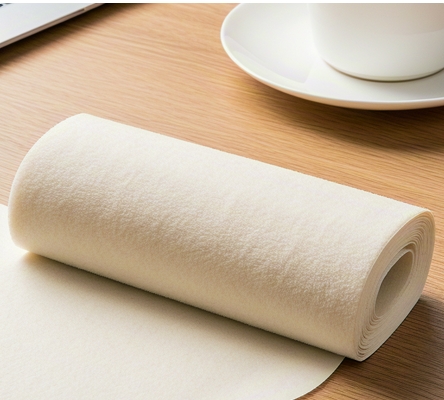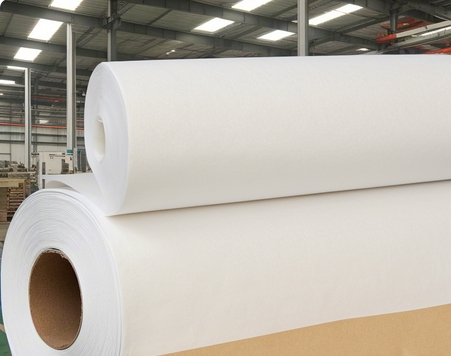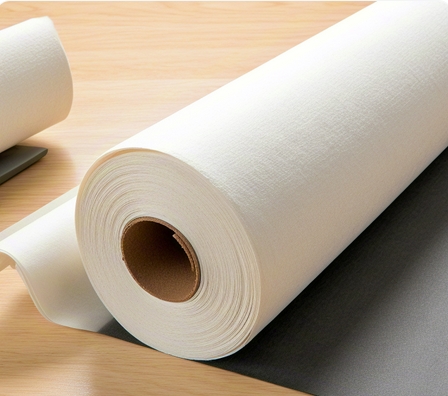Language

As a key material for modern industrial cleaning, dust-free paper has a composite structure made of refined wood pulp and polyester fibers through hydros pinned composite technology. This innovative process allows the material to combine the strong absorption properties of natural fibers and the durability of synthetic fibers, showing unique advantages in the field of dust-free paper. According to the ASTM F2100 standard verification, its core performance indicators include particle release below 0.1 mg/m³, liquid absorption rate exceeding 400%, and chemical stability with resistance to pH 2-12, providing a reliable cleaning solution for precision manufacturing environments.
In the application analysis of semiconductor wafer production links in the field of electronic manufacturing, dust-free paper mainly assumes the dual responsibilities of equipment surface wiping and chemical solvent treatment. Taking the 12-inch wafer production line as an example, operators need to use professional wipe materials to process more than 200 process nodes every day. It is worth noting that in the clean room grade system clearly divided by the ISO 14644-1 standard, H13-level filtered dust-free paper can be used in environments below CLASS level 7, while clean areas above CLASS level 5 and above need to be switched to dust-free cloth material. Specific application scenarios include: • Removal of residual photoresist on the table of the lithography machine • Acid solution absorption after the etching process • Particle contaminant control during the packaging test stage
Special requirements of the biopharmaceutical industry In biosafety level 3 laboratories, sterilized dust-free paper must pass USP Class VI biocompatibility certification. Data from a multinational pharmaceutical company's freeze-drying production line shows that dust-free paper with gamma ray sterilization can increase the cleaning efficiency of the equipment by 35%, while controlling the risk of microbial contamination to ≤0.1CFU/cm². It is worth emphasizing that in cell culture operations, the materials need to meet the requirements of ISO 10993 cytotoxicity testing to ensure that substances that inhibit cell growth will not be released when exposed to the culture medium.
Technical specifications for food processing scenarios are in accordance with the requirements of the HACCP system. Food-grade dust-free paper must obtain NSF certification and comply with the FDA 21 CFR 176.170 standard. On the carbonated beverage filling line, the improved acid resistance dust-free paper can continuously absorb liquid media with a pH value of 2.8 without structural decomposition. Thermodynamic tests show that the specially treated polypropylene substrate can maintain dimensional stability under 121°C steam sterilization conditions, which makes it perfectly adapted to the online cleaning process of the CIP system.
Innovative application in new energy vehicle manufacturing In the assembly process of power battery modules, electrostatic dissipative dust-free paper has become a key material to prevent short circuits. Industry measured data shows that using special wipe materials with surface resistance value of 10^6-10^9Ω/sq can reduce the self-discharge rate of lithium batteries to below 0.5% per month. In the cleaning process of fuel cell bipolar plates, the design of the fiber structure of dust-free paper must ensure that metal debris with a particle size of >5 μm can be effectively captured, while maintaining a surface friction coefficient below 0.3 MN·m.
Analysis of application scenarios of industrial-grade dust-free paper
In the field of precision manufacturing, professional-grade dust-free paper has become a key consumable in many industries due to its unique physical characteristics. Taking the automotive coating process as an example, the pretreatment stage requires the use of high-cleanness wipe materials to remove 0.5-5μm microparticles on the body surface. According to actual test data from a well-known car company, the use of dust-free paper that complies with ISO 16232 standards for surface treatment can increase the adhesion of epoxy primer by 27%, effectively preventing the coating from falling off.
During the maintenance of aerodynamic system, the carbon deposit removal operation of turbine blades puts strict requirements on cleaning materials. The CFM56 engine maintenance regulations stipulate that dust-free paper resistant to aviation fuel (Jet A-1) must be used for blade cleaning. Practice of a maintenance base shows that the use of special dust-free paper containing polyester fiber reinforced layers has increased the efficiency of carbon sediment removal by 41% compared with traditional cotton cloth, and significantly reduces the risk of secondary pollution on metal surfaces.
Application cases in the precision printing industry show that gravure printing roller cleaning operations must meet the requirements of detergent and material compatibility at the same time. A packaging material manufacturer successfully reduced the mesh clogging rate from 3‰ to 0.8‰ by using dust-free paper with butanone-resistant solvents. In the field of vacuum coating, ITO conductive film production requires the surface cleanliness of the substrate to reach NAS level 5, and the sulfur content of special dust-free paper must be controlled below 5ppm to meet the process standards.
In special scenarios of the nuclear industry, radioactive material treatment poses dual challenges to material performance. Records of the decontamination project of the Chernobyl nuclear power plant show that dust-free paper used in combination with EDTA chelating agent can adsorb more than 98% of uranium oxide particles. These specially treated materials need to withstand 500kGy radiation dose and achieve complete ashing in a 1200°C incinerator to meet nuclear waste treatment specifications.
Other industrial application scenarios also reflect the unique value of dust-free paper. The maintenance of semiconductor clean room equipment requires materials to have high water absorption (≥400%) and low dust generation characteristics. The actual data of a wafer fab shows that using double-layer composite structure dust-free paper for equipment wiping can control particulate pollution within the ISO level 2 standard. In the post-processing process of 3D printing, dust-free paper that is resistant to isopropanol corrosion can effectively remove the remaining support structure debris on the surface of the resin model and avoid damage to the 0.1mm fine structure.
Tags:
RELATED RESOURCES

The difference between dust-free paper and wiping paper is revealed. 15 years of experience in the f
In the field of industrial cleaning consumables, dust-free paper and wipe paper are two core products often ca......
More

In-depth analysis of the evolution of dust-free paper technology and its industrial applications: fr
In-depth analysis of dust-free paper technology evolution and industrial application In the material innovatio......
More

From clean room to operating room: 7 application forbidden areas where dust-free cloth and non-woven
In the fields of industry and people's livelihood, although dust-free cloth and non-woven fabric are simil......
More

Application of reel dust-free cloth in display panel manufacturing: 0.5mm precision cleaning solutio
In the fields of advanced manufacturing and microelectronics, submicron pollution control is directly related ......
More
Related Products
Room 101, Building 1, Angeer Factory, No.4, Hetian Road, Shatian Community, Kengzi Street, Pingshan District, Shenzhen, Guangdong, P.R. China 518122
info@wipestar.com
+86-755-89616775
+86-755-89616773
Related Products
RELATED RESOURCES

The difference between dust-free paper and wiping paper is revealed. 15 years of experience in the f
In the field of industrial cleaning consumables, dust-free paper and wipe paper are two core products often ca.........
More

In-depth analysis of the evolution of dust-free paper technology and its industrial applications: fr
In-depth analysis of dust-free paper technology evolution and industrial application In the material innovatio.........
More
WIPESTAR
微信官方公众号